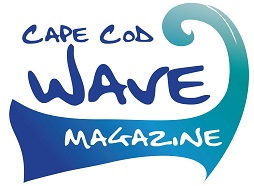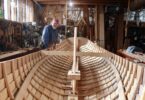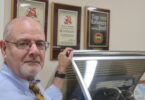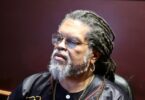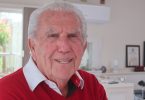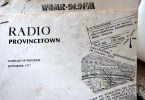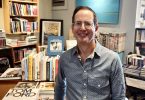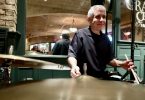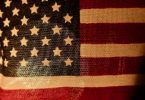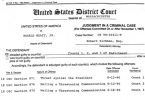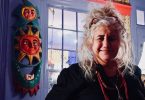FALMOUTH – Rowland Scherman is smoking “really good tobacco” in his ever-present pipe on an outside patio at a Mexican restaurant when a very patient waitress tells him that “this is a completely no smoking zone.” Smoke from his pipe, she says, has been wafting into the restaurant. The waitress has no idea who Scherman…
You may also like
Harvest Days: Remembering Michael Pearson’s Harvest Gallery Wine Bar
The Grab Brothers Make Hippie Happy Music – A Profile
The “Functional Art” of Walter Baron, Boatbuilder – A Profile
Follow The Money, and The Good Vibe; Why Shop Local – An Essay
Making Things Happen; Attorney Bruce Bierhans – A Profile
Are We Winning? In Our Summer Paradise, Summer Is Warmer & Longer
Dream Job: Rich Rogers’ Blue Collar Path to WMVY – A Profile
Dan McKeon: Ptown’s Available Housing Matchmaker – A Profile
Mwalim: Da Phunkee Professor, Artist, Writer & Groovalotto – A Profile
Zoe Lewis: Provincetown’s Jazzy Zen Vaudeville Vagabond – A Profile
ArtsCape: The Quirky Creations of Sue Beardsley
Andy Dufresne: 91 Candles For Falmouth’s Civic-Minded Barber – A Profile
WOMR At 40; An Outermost Radio Tale of Audacity & Tenacity
Saving East End Books; A Community’s Love & Jeff Peters’ “nerves of steel”
Jill Erickson: A Town Librarian Retires – A Profile
Mike Houghton, Once Upon A Time At Jasper’s Surf Shop – A Profile In Memoriam
Bart Weisman “the Jazz Mayor Of Cape Cod” – A Profile
Ripple Effect — Rising House Prices, Summer & Cape Cod’s Future
Christin Marshall of EforAll; Evangelist For Entrepreneurs – A Profile
Meet The Jitters – The Cape Cod Band Formed By The Pandemic & Technology
2020 in 5 Minutes, A VIDEO – Music By Chandler Travis
In A Close Election, Would The Losing Side Accept The Result? Cape Politicians & Activists Weigh In
EXCLUSIVE: Details of Ron Beaty’s “Baggage” In An Election Like No Other
Breaking The News – An Essay About Local Journalism On Cape Cod
Twist & Maybe Don’t Shout – Talking To Cape Musicians About Summer Music During A Pandemic
People Of Action, And The Work To Keep Peace On The Cape
“Who’s going to cut your filet mignon?” – Realtors On The Cape Housing Crisis
Mr. Positivity; Jonathan Thompson Chronicles Happiness – A Profile
Julia Salinger, Artist, Actress, Poet & More – “a creator by nature” – A Profile
Steven Xiarhos Retires – A Police Story. Is Politics Next?
About the author
Brian Tarcy
Brian Tarcy is co-founder of Cape Cod Wave. He is a longtime journalist who has written for the Boston Globe, Boston magazine, the Cape Cod Times and several other publications. He is the author of "YOU CAN'T SELL RIGHT FIELD; A Cape Cod Novel." He is also the author or co-author of more than a dozen mostly non-fiction books, including books with celebrity athletes Cam Neely, Tom Glavine and Joe Theisman. His previous book was, "ALMOST: 12 Electric Months Chasing A Silicon Valley Dream" with Hap Klopp,who created the iconic brand, The North Face.
For more information, see Briantarcy.com
Brian is a long-suffering Cleveland Browns fan with a long-running NFL predictions/political satire column connecting weekly world events to the fate of his favorite team, now at Whatsgonnahappen.com.
